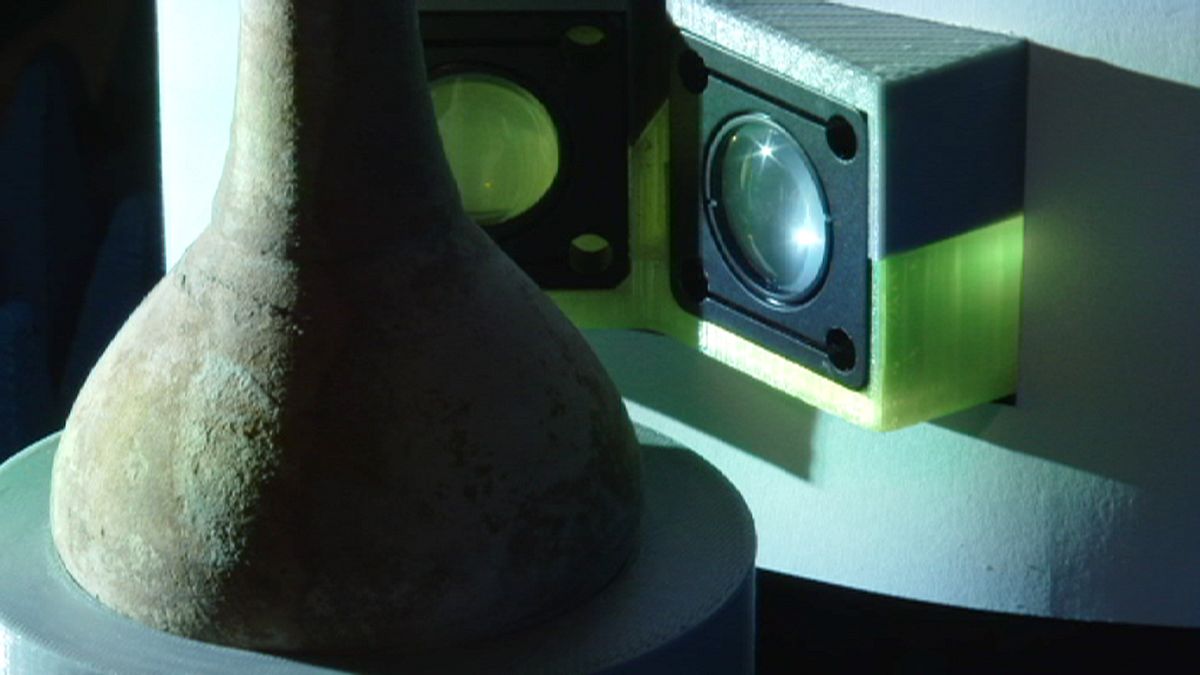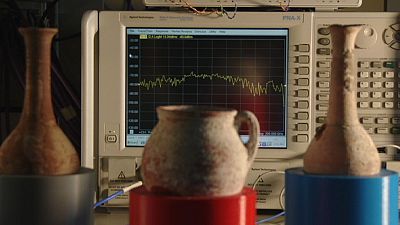It has long been known that, below the surface, works of art often contain important information about how they were created. However, revealing
It has long been known that, below the surface, works of art often contain important information about how they were created. However, revealing those secrets in a way that does not damage the object is a major challenge for art experts.
Now, researchers at the University of Oviedo in northern Spain think they have the answer: a scanner using the highly versatile material, graphene.
Samuel Ver Hoeye, a telecommunications engineer involved in the research explained its advantages:
“Graphene acts as a frequency multiplier. It is able to generate higher frequency signals out of lower frequencies, in a relatively easy way. Graphene also allows us to go deeper into the work of art, and to identify the chemical composition of its materials,” he said.
Graphene scanner
The pictures obtained with the graphene scanner are then combined with image processing techniques and 3D high-performance scanning to generate images of sealed 3D objects, whose hidden secrets can then be studied more easily.
Yannick Francken, a computer scientist with 4DDynamics who is also working on the EU-funded programme demonstrated the computer-imaging process:
“What you see (here) is the real colour of the works of art. It has been virtually illuminated, and virtually recorded by a camera. Technically the most challenging part is to combine all the individual scans. These scans need to be automatically aligned. And if that is not perfectly done, within a 0.2 millimetre accuracy, then we get really bad colour reconstruction.”
The scanner was designed by scientists at a European research project studying both 3D objects and paintings, which have a 2- dimensional surface. The scanner has a versatility much needed in the world of art conservation and restoration, as research project coordinator Javier Gutiérrez Meana explained:
“Existing scanners for works of art are currently very expensive. Our technology has been designed to be much cheaper. It results in a compact, lighter scanner that can easily be transported to museums or laboratories to study objects.”
Beneath the surface
Conservation experts at the Asturias Museum of Fine Arts provided researchers with canvasses to test their device on. It was also
tested on valuable historical pieces from the museum’s collection.
Marta Flórez Igual, one of the museums conservators, said the results were encouraging: “We can discover the depth of the varnish and the colour layers. We can see if there were preliminary drawings beneath the actual painting, and what the materials used for those drawings were. We are also trying to see if the scanner is also able to identify the different materials inside the painting, like varnishes, binders and pigments.”
User experience
Data from the graphene scanner is currently being used to develop a smartphone application based on Augmented Reality.
Museum visitors could ultimately interact with the artworks in a deeper and more engaged way, Meana believes:
“The application allows the user to actually see inside the painting. For instance, in (one) painting we’ve discovered a mysterious number 34 drawn underneath the colour layers. We also discovered that one of the capes was originally green.”
Researchers hope that the graphene scanner and its applications could become a market reality in less than 5 years.




